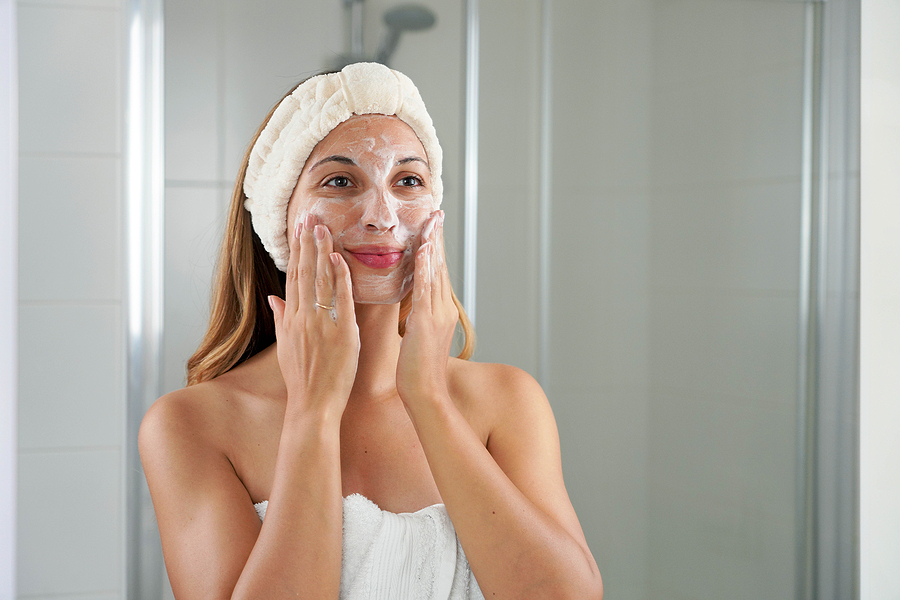
One of the most important aspects of any solid skincare routine is the fine art of exfoliation, a practice that when done regularly can really help keep your skin looking beautifully plump, glowing and healthy.
But did you know that there are different ways in which you can go about exfoliating?
There’s physical exfoliation, of course, where you use a product of some kind that contains a natural exfoliant to buff away dead skin cells when you wash your face. This can help clear any nasty clogged pores, as well as potentially increasing collagen production.
However, if you’re not careful and you use the wrong product or you simply scrub your skin a little too harshly, you can cause microtears in the skin, so it’s essential that you’re gentle with your skin, no matter what you’re doing.
A potentially kinder alternative (and one that you can use alongside your current exfoliating routine) is active exfoliation, something you may not yet have come across.
It sounds a little offputting, perhaps, because it involves the use of skincare acids… and many people are deterred from trying such solutions out because of negative connotations associated with the word.
While there are lots of different types of acids to be found in these products, the ones you’ll come across most often are alpha hydroxy acids (AHAs) and beta hydroxy acids (BHAs).
AHAs, such as glycolic acid and lactic acid, are water soluble, which means they only target the very top layers of your skin. If you suffer from dry skin and aren’t sure where to turn, perhaps try adding some AHAs into your routine to see if it makes a difference.
As for BHAs, salicylic acid is the most commonly used variety in cosmetics. These acids are oil soluble, so they’re able to target the skin deeper down, cleansing and exfoliating it from the inside. Because of this, they’re particularly well suited to those with oilier skin, but they’re still an effective exfoliating treatment for all skin types.
If you are planning on using salicylic acid in your skincare routine for active exfoliation, just make sure that you use solutions that contain SPF.
There is quite a lot of conflicting evidence out there as to whether or not salicylic acid increases sun sensitivity in the same way that retinol and glycolic acid can do… so always err on the side of caution and be careful in the sunshine!
And, as a good rule of thumb to follow when introducing any new ingredient to your skincare routine, if you notice any reactions, irritations, itching or signs of redness, make sure you give your skin a break so you can see what’s working and what’s not.
Looking for hyaluronic acid face cream? See what’s in stock in the Bloome store today.